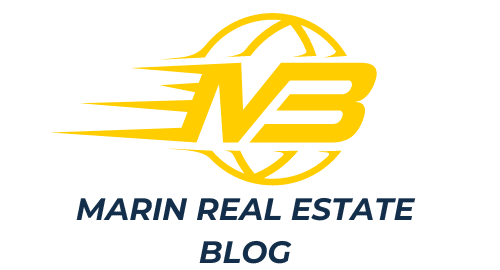What are the best practices for real estate developers in integrating public transportation access into their projects?

Public transportation is a vital aspect of the urban fabric, providing an essential service for millions of residents every day. As real estate developers, it’s crucial to integrate public transit into your project plans to promote accessibility, reduce traffic congestion, and enhance the quality of life for the future residents. But how do we blend real estate development and public transportation seamlessly? Let’s delve into this topic in the sections below.
Understand the Concept of Transit-Oriented Development
Transit-Oriented Development (TOD) is a planning and development strategy that aims to create vibrant, livable, and walkable communities within walking distance of public transport services. By understanding the principles of TOD, you’ll be able to craft projects that strike a balance between residential, business, and leisure spaces, while being well-integrated with transit systems.
A lire également : How can real estate investments be structured to support the transition towards more sustainable urban living environments?
The key to successful TOD is high-density development. This typically involves constructing more compact, mixed-use developments near transit stations to maximize the number of people living, working, or spending time within easy reach of transit. This type of development reduces the need for cars, encourages walking and cycling, and creates a more sustainable urban environment.
Gather and Analyze Relevant Data
A data-driven approach can significantly enhance the planning and execution of your project. By collecting and analyzing data on factors such as transit routes, ridership numbers, demographic trends, and local amenities, you will be able to design a development that not only meets the needs of the community but also maximizes the potential of public transport infrastructure.
A lire également : What are the innovative methods for achieving water neutrality in real estate developments in arid regions?
Consider using Geographic Information System (GIS) tools to visualize the data and facilitate the decision-making process. GIS maps can provide a wealth of information about the existing urban landscape, enabling you to identify potential sites for development and understand how your project will interact with existing transport networks.
Engage with the Community
Community engagement is a critical part of transit-oriented development. Regular dialogue with local residents, businesses, and community groups can provide valuable insights and help shape the design and layout of your project.
Holding public forums, conducting surveys, and soliciting feedback through social media or other online platforms can all be effective methods for gauging public opinion. By actively involving the community in the planning process, you can foster a sense of ownership and commitment, which can help to ensure the long-term success of your project.
Collaborate with Transportation Authorities
Developing a strong partnership with local transportation authorities is a cornerstone for integrating public transportation into real estate projects. By working closely with agencies like the MTA, you can ensure that your project aligns with existing transportation plans and policies.
Such collaboration can help in coordinating schedules, integrating ticketing systems, or even planning new transit routes. Also, transportation authorities often have access to a wealth of data that could be beneficial for your planning and design process.
Invest in Quality Design
Quality design is a critical factor in making your development attractive to potential residents, businesses, and investors. Well-designed spaces can not only enhance the liveability of your project but also encourage the use of public transportation.
Consider incorporating elements such as pedestrian-friendly streetscapes, bicycle storage facilities, and easy-to-navigate transit stations into your design. Also, think about how to create a sense of place through the use of public art, landscaping, and distinctive architectural features.
Remember, integrating public transportation access into real estate projects is not just a matter of practicality, but also an opportunity to create vibrant, sustainable communities that enrich the urban fabric. By employing these best practices, you can ensure that your projects contribute positively to the economic growth and development of the city while also meeting the needs of the community.
Leverage Financing and Incentives for Transit-Oriented Projects
When it comes to real estate development, financing can be a significant challenge. But projects that are geared towards promoting public transportation and sustainable living often have unique financing options and incentives available. Leveraging these resources can make your project more feasible and attractive to investors.
Governments, at all levels, increasingly recognize the value of developments that integrate public transportation. As a result, there are various grants, low-interest loans, tax credits, and other incentives available for developers who commit to building transit-oriented projects. For example, the Federal Transit Administration in the United States offers the Transit-Oriented Development (TOD) Planning Pilot Program, which provides funding to integrate land use and transportation planning with a new transit capital investment.
Moreover, private investors and lenders also see the value in these types of projects. Developments near transit stations tend to have higher property values, lower vacancy rates, and a higher return on investment. Therefore, they are often willing to provide financing for such projects.
Ensure that you research all available options and incorporate relevant incentives into your project’s financial model. This proactive approach can help secure the necessary funding and bring your vision to life.
Nurture Long-Term Operational Success
A successful transit-oriented development doesn’t end with the completion of construction. It’s essential to consider how the site will function and thrive in the long term. Maintaining the site’s appeal and meeting the evolving needs of residents, businesses, and transit users is key to the project’s longevity.
One way to ensure long-term success is by establishing a management plan that includes routine maintenance, updates, and improvements for both the development and the integrated transit facilities. This could involve landscaping, cleaning, security, and other services that keep the site attractive and functional.
Moreover, it’s important to maintain a strong relationship with local transportation authorities and the community. Regularly review transit usage data, solicit feedback from residents and transit users, and be ready to adapt to changing needs and circumstances.
Remember, the ultimate goal is to create a sustainable, vibrant community that continues to thrive long after the construction crews have left.
Conclusion
Incorporating public transportation access into real estate projects is no small task, but with careful planning and execution, developers can create vibrant, sustainable communities that meet the needs of residents and businesses, while also promoting the use of public transportation.
From understanding the principles of TOD and gathering relevant data, to engaging with the community and collaborating with transportation authorities, developers can create projects that seamlessly integrate public transit and contribute positively to urban growth and development. By leveraging available financing and incentives, and nurturing long term operational success, developers can ensure their projects are not only economically viable, but also beneficial for the community and the environment.
As cities continue to grow and evolve, the demand for transit-oriented developments is likely to increase. By employing these best practices, real estate developers can help shape the future of urban living, creating spaces that are not only profitable but also contribute to a more sustainable and connected world.
